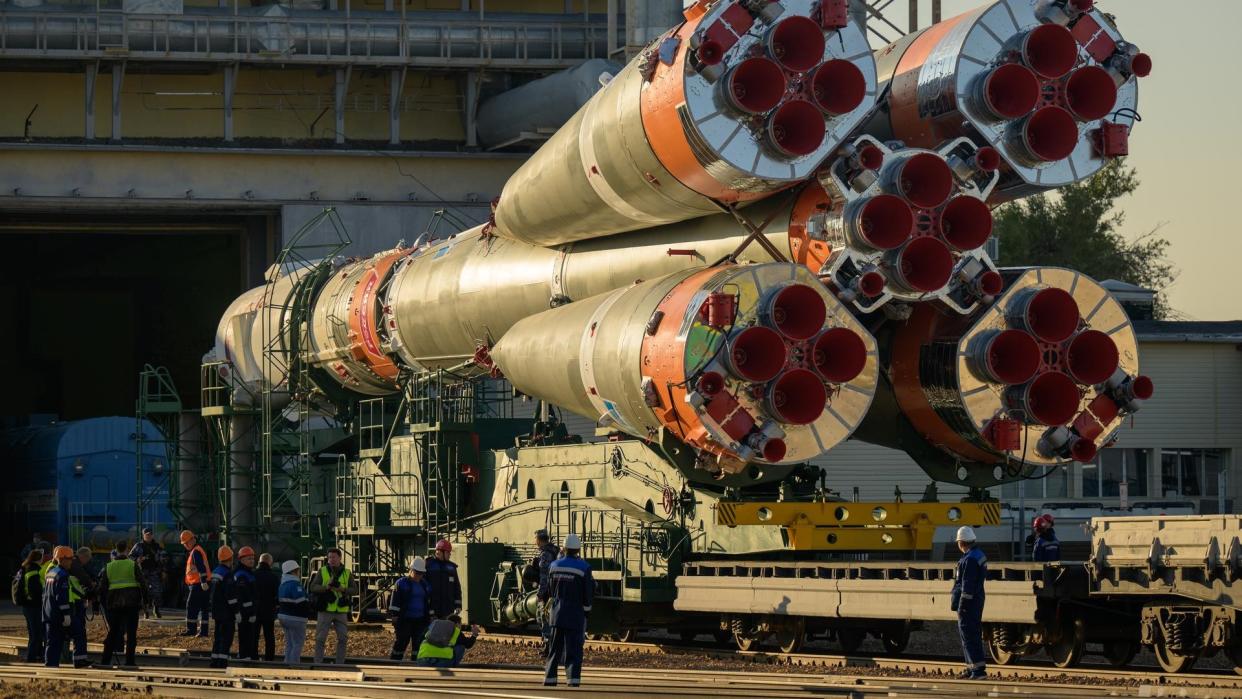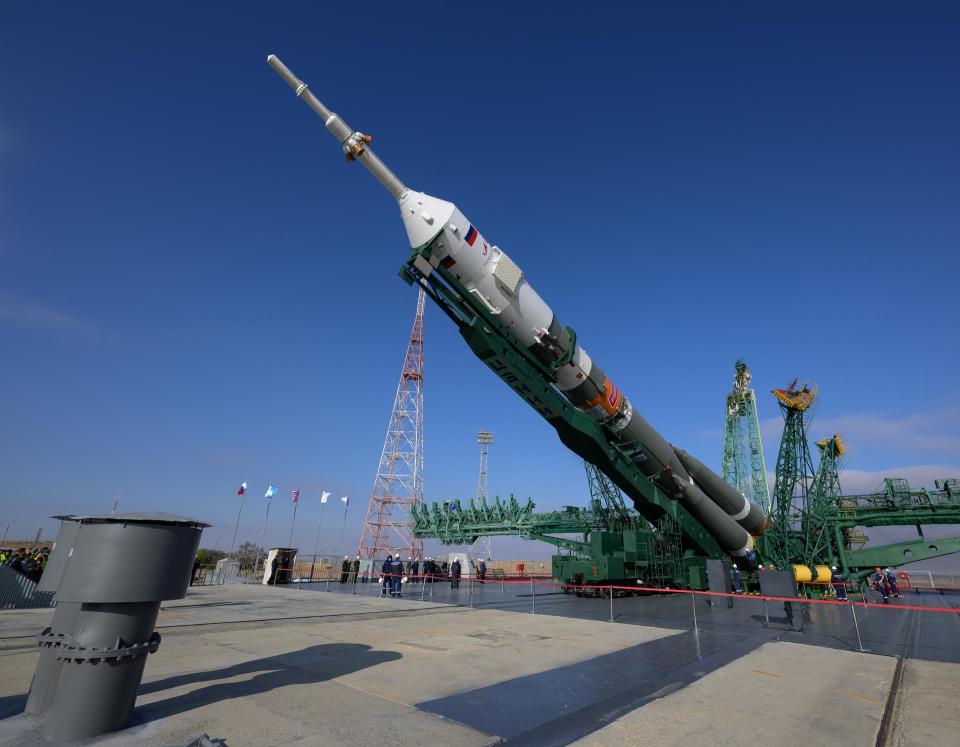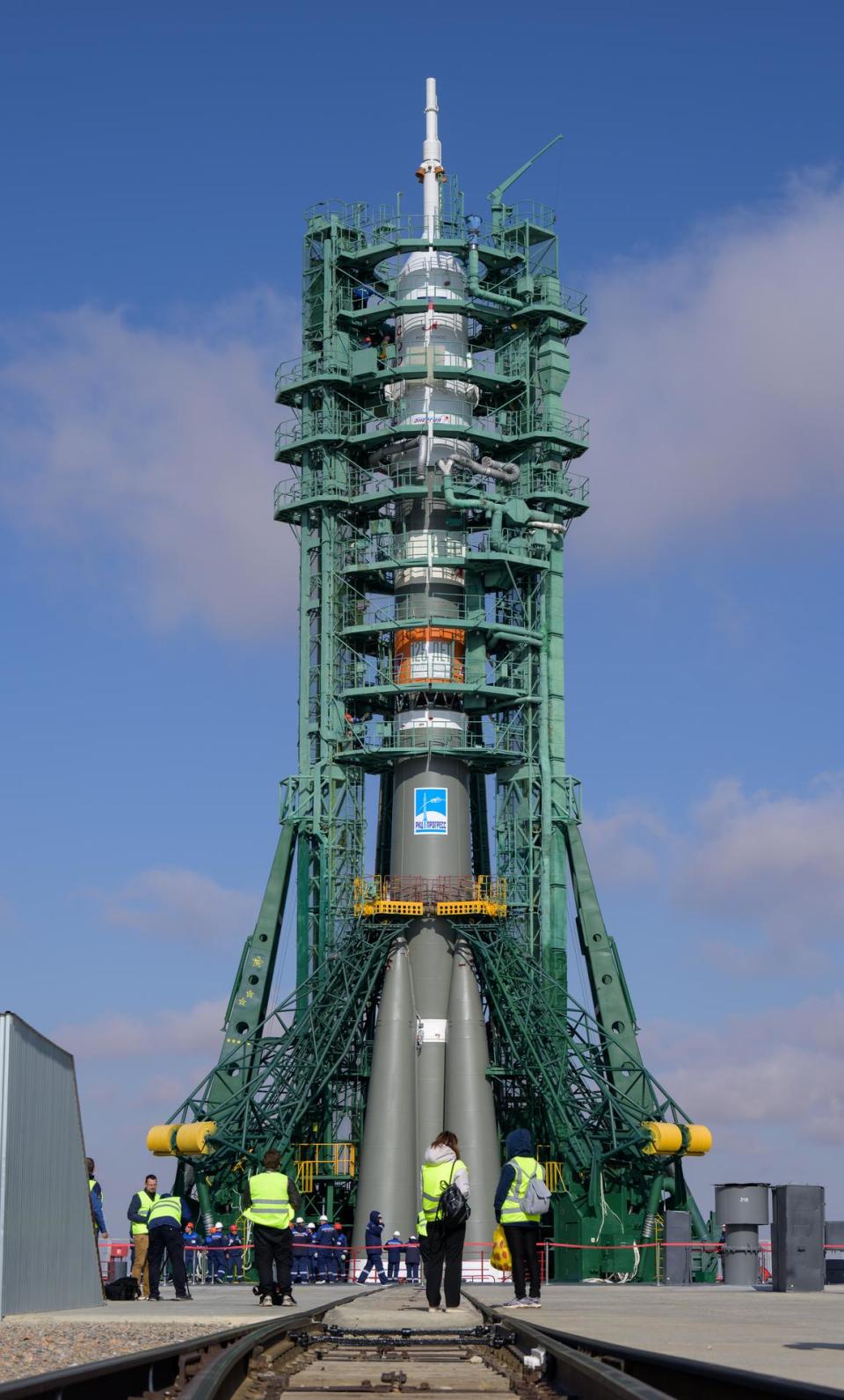Russia rolls Soyuz rocket to the pad ahead of Sept. 15 astronaut launch to ISS (photos)

Tuesday was an active day at Russia's Baikonur Cosmodrome, in Kazakhstan, as the Soyuz rocket for the next astronaut launch to the International Space Station was rolled to the launchpad.
A Soyuz 2.1a rocket will launch the Soyuz MS-24 mission on Sept. 15, at 11:44 a.m. EDT (1544 GMT).
The spacecraft will carry three crew members of ISS Expedition 70 to relieve crewmembers delayed aboard the International Space Station (ISS) more than six months past their scheduled return to Earth.
Related: NASA astronaut Loral O'Hara ready for Soyuz launch to relieve delayed crew in space
MS-24's Soyuz 2.1a rocket was rolled via railcar from the Russian Space Corporation (Roscosmos) integration facilities, in Baikonur, to the Cosmodrome's Launch Complex 31.NASA photographer Bill Ingals was able to capture Soyuz's Sept. 12 journey, as the train pulled the rocket down the tracks.

A leak aboard the MS-22 spacecraft extended its crew's mission while their empty spacecraft was undocked and returned to Earth. The MS-23 Soyuz was then repurposed for an uncrewed launch to the space station in order to bring the stranded astronaut and cosmonauts home.

The Expedition 70 crew members launching this week were originally slated to fly that spacecraft, but were bumped to Soyuz MS-24 as a part of the schedule adjustment. That rocket is scheduled to kickoff Friday morning, and is now standing at pad ready to launch.

Roscosmos cosmonaut Oleg Kononenko will fly as mission commander for MS-24. He will be joined by fellow cosmonaut Nikolai Chub and NASA astronaut Loral O'Hara, both of whom are headed to space for the first time.

This will be Kononenko's fifth mission, and will add six months to his already accumulated 736 days in orbit. As Kononenko and his crewmates reach the latter half of their stay onboard the ISS, the cosmonaut will surpass Gennadi Padalka as the most traveled human in space. Padalka set the record in 2015, returning to Earth after hitting accumulated 879 days.

The Sept. 15 launch is scheduled for 11:44 a.m. EDT (1544 GMT). A short two hours later, Soyuz MS-24 will be preparing to rendezvous with the ISS.

A hatch opening and welcome ceremony is scheduled to begin at 4:45 p.m. (2045 GMT), later that day.

Soyuz MS-24 is scheduled to dock to the space station's Rassvet module, on the Russian section of the orbital laboratory. With the arrival of MS-24, crewmembers of MS-22/MS-23 will prepare to return to Earth.

Related Stories:
— Leaky Soyuz spacecraft at space station returns to Earth in speedy landing
— Russian Progress cargo spacecraft launches toward the ISS
— Soyuz rocket: Russia's venerable booster
As a result of the Soyuz MS-22 leak, NASA astronaut Frank Rubio, and cosmonauts Sergey Prokopyev and Dmitry Petelin have all now spent an entire year in orbit, putting them alongside a select few human space travelers whose missions have lasted as long.
Rubio has now officially broken the U.S. record for continuous days in space, logging a total of 355 days. "My family has been the cornerstone that's inspired me to hopefully keep somewhat of a good attitude while I've been up here," Rubio said in a video recorded on Sept. 5. that aired on NASA Television's media channel Tuesday (Sept. 12).

